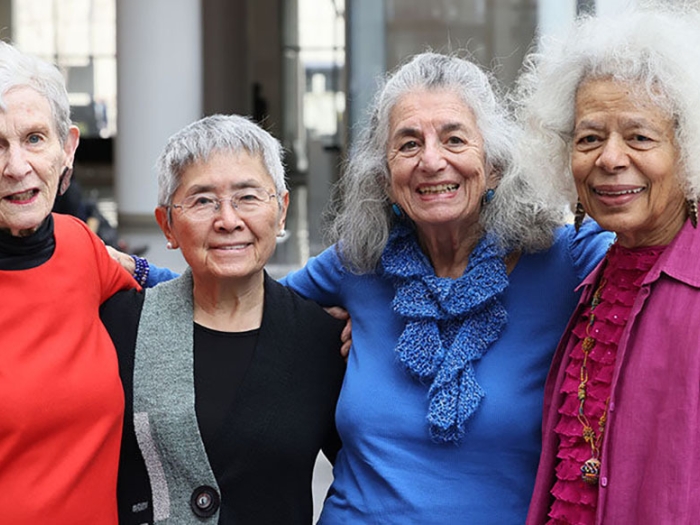A medical student and clinician team up to study diversity and representation in pandemic media coverage.
7:49 PM
Author |

Research has shown that COVID-19 has disproportionately impacted women in a variety of ways throughout academic medicine. For example, Reshma Jagsi, M.D., DPhil, deputy chair of radiation oncology and director of the Center for Bioethics and Social Sciences in Medicine at Michigan Medicine, recently found that women are significantly underrepresented as authors of academic research papers published throughout the pandemic. This is likely because many women have had to take on greater responsibilities at home.
This notion led Jagsi and Alangoya Tezel, a first-year medical student at the University of Michigan Medical School, to team up to study the representation of physicians during the COVID-19 news cycle. Their research was recently published in JAMA Internal Medicine.
"When we started this project, I had been quarantining at home and subsequently, consuming a lot of media," says Tezel. "And as a woman about to begin medical school, I was uncomfortably aware that there simply weren't many women – especially women in health care – on air. I found this alarming, given that the overwhelming majority of health care workers in the United States are, in fact, women."
Tezel adds that this led her and Jagsi to wonder if there were underlying biases at play.
"Of course, it's one thing to have a suspicion, but completely different to be able to legitimize the presence of inequity," she says. "And really, this project was all about trying to understand and quantify gender bias."
Jagsi and Tezel decided to analyze primetime programming from May to June of 2020 on three well-known cable news networks: Fox News Network, CNN and MSNBC. The determined "primetime slot" for study was defined as the 8 p.m. to 11 p.m. (EST/PST) timeframe, which traditionally renders the highest ratings.
MORE FROM THE LAB: Subscribe to our weekly newsletter
Their "observation window" covered several significant current events, including the country's earliest state re-openings, as well as the ongoing protests throughout the U.S. regarding social injustice and police brutality.
"In order to properly study the content, we recorded data surrounding each interviewee we watched on these networks," says Tezel. "We recorded their names, genders, given job titles, educational degrees, speaking durations and interview content – whether it was COVID-related versus unrelated, for example."
The team also made sure to evaluate physician speakers and non-physician speakers separately and devised a system to ensure that they weren't duplicating clips.
"Any clips of past interviews were not included in our data," says Tezel. "We understood that it was important for us to analyze unique content."
Their findings revealed that of the 220 interviewees speaking on COVID-19, women were underrepresented as speakers, encompassing approximately 30% of the speakers interviewed and 25% of the total speaking time.
Like Podcasts? Add the Michigan Medicine News Break on iTunes, Google Podcast or anywhere you listen to podcasts.
"We did another analysis looking specifically at physicians interviewed, and the representation of women was even worse. Women physicians made up only 25% of the physicians interviewed and merely 15% of the total physician speaking time on COVID-19," says Tezel. "This is especially problematic. What we see on the news, at least in part, shapes our reality. If we only see male physicians and male public health researchers on the news, we undermine the legitimacy of female physicians and researchers."
Tezel notes that on the topic of COVID-19, physicians and other medical experts were also very much underrepresented as speakers on primetime news programming.
"We found that physicians, in particular, constituted approximately 20% of unique speakers and 30% of the total speaking time on COVID-19 content," she says. "This is especially worrisome because, in a crisis situation, we've seen how misinformation can really harm people. It's important for viewers to receive information from credible sources."
In the future, Tezel hopes to see more research surrounding racial and ethnic minorities in the news cycle, as well.
"We know that in the COVID-19 pandemic, racial and ethnic minorities have been disproportionality affected. I think moving forward, especially with the COVID-19 vaccine roll-out and all of the anxiety and the misinformation spreading on that, I'm interested to see how diversity and representation can engage public trust towards the health care system. Everyone has the right to be part of the conversation."
Paper cited: "Diversity and Representation of Physicians During the COVID-19 News Cycle," JAMA Internal Medicine. DOI: 10.1001/jamainternmed.2020.6285.

Explore a variety of healthcare news & stories by visiting the Health Lab home page for more articles.

Department of Communication at Michigan Medicine
Want top health & research news weekly? Sign up for Health Lab’s newsletters today!





